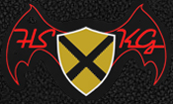Revving Up After WWII: The Rise of Hot Rodding
As repeated many times throughout history where terrible situations have fostered ingenuity and progress, so too did WW2 spur on the automotive aftermarket. On this day 81 years ago, the Japanese attacked the US Navy Fleet at Pearl Harbor, bringing the US into the war.
Sparking Creativity Amidst Adversity
In the aftermath of World War II, a unique and exhilarating transformation was taking place in the American automotive landscape. Buckle up as we take a joyride through history, exploring how the aftermath of WWII fuelled the dynamic phenomenon known as hot rodding.
Pre-War Roots and Post-War Boom
Bootleggers and Prohibition: The Birth of Hot Rodding
To fully grasp the post-WWII hot rod explosion, we need to rewind to the roots of this fascinating subculture. Picture bootleggers during Prohibition, evading law enforcement with fast, cleverly modified cars. These relatively nimble vehicles laid part of the foundation for the roaring trend that emerged in the late 1930s in southern California. Closer to the later epicentre of hot rodding was the Muroc Dry Lakes, home of the Southern California Timing Association (SCTA), which was an even bigger part of what was to come.
Hitting the Brakes during the War
However, as World War II reached the US, the engines of hot rodding encountered a temporary slowdown. Many young enthusiasts, the lifeblood of the hot rod community, enlisted in the military. With shortages of gasoline and materials, the hobby virtually skidded to a halt during the war.
Post-War Surge: Veterans and Surplus Supplies
Yet, as the war concluded, a wave of returning veterans flooded back to the U.S. Armed with mechanical and metalworking skills acquired during their service, many settled in California. Here, favourable conditions fuelled the resurgence of hot rodding. The end of the Depression and a booming economy provided the financial fuel for this automotive passion. Surplus war supplies, including airplane parts, were ingeniously repurposed for hot rodding.
Taking Off: Aviation Surplus and Racing Innovation
High-Flyin’ Parts for Ground-Bound Speed
Aviation surplus played a pivotal role in propelling hot rodding to new heights. Hydraulic pumps, lightweight aluminium seats, and other high-quality equipment designed for wartime use found a second life on the racing tracks. These surplus treasures seamlessly integrated into roadsters, coupes, and eventually belly tanks, giving birth to a distinctive style of automotive racing.

From Abandoned Airports to Regulated Races
Post-WWII, abandoned military airports across the country transformed into hotbeds for racing. Drag racing tracks, some initially stretching up to a full mile and up to four lanes wide, provided heart-pounding experiences. The need for safety prompted the establishment of the National Hot Rod Association in 1951, aiming to shift drag racing from risky public streets to controlled environments.
Gaining Traction: Hot Rodding Goes Mainstream
From Passion to Profession
With the rise of racing associations came greater awareness and professionalism. Pioneers like Stuart Hilborn, Ed Iskanderian, and Bob Hedman turned their hard-earned knowledge into successful businesses, supplying a burgeoning market. These names, along with others like Edelbrock and Moon, became synonymous with hot rodding and continue to resonate today. This success also found markets outside of the US, and car culture around the world has blossomed as a result.
Hollywood’s Turbo Boost: The 2000s
While aftermarket parts experienced ups and downs, the 2000s marked a turning point. Reality TV shows and movies like American Rodder, Pimp my Ride, and The Fast and the Furious films fuelled a desire among even casual car owners to enhance their vehicles. Today, a broader audience recognizes the benefits of aftermarket parts for both aesthetics, performance, and personalisation.
SEMA: Driving Innovation Since 1963
Evolution of SEMA
The Specialty Equipment Market Association (SEMA), born in 1963, initially stood for Speed Equipment Manufacturing Association. However, in 1970, as government regulations loomed, the name evolved to Specialty Equipment Market Association to enhance its overall image.
The SEMA Show: From Basement to Vegas Extravaganza
The first SEMA Show in 1967, held in the Dodger Stadium basement, laid the groundwork for a spectacular journey. Over the years, the show grew exponentially, eventually moving to Las Vegas in 1977 for its spacious venues, reliable weather, and a touch of world-famous allure.
Accelerating into the Future
In 1983, the import parts section was added, further expanding SEMA’s influence. Today, the SEMA Show brings together over 2,300 exhibitors, occupying more than 11,000 booths, and attracts a staggering 150,000 industry representatives. The global automotive aftermarket industry, valued at over US$427.51 billion in 2022, proves that from humble (and admittedly horrible) beginnings, a remarkable journey has unfolded. Let’s continue riding the waves of innovation, horsepower and creativity into the future!
All respect given to those whose lives were lost, as well as survivors of the horrendous war in the Pacific. Lest we forget.
